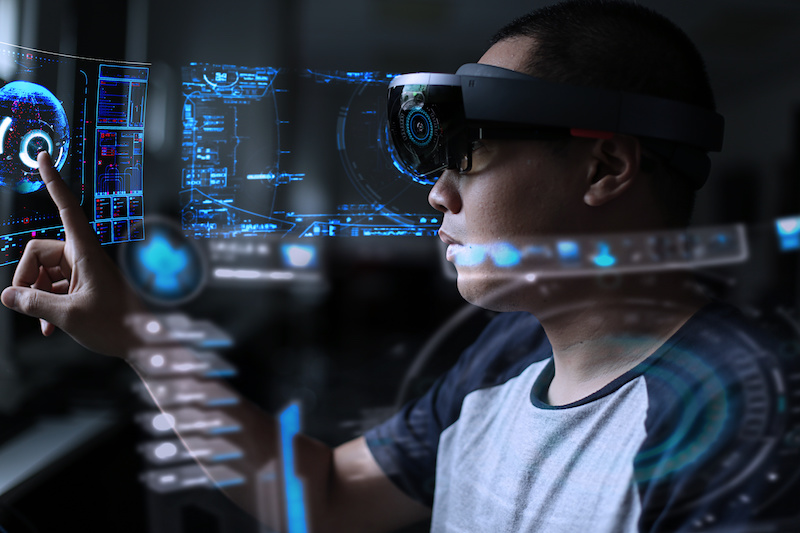Many of today’s workplaces are redefining what it means to be ‘at work’ with more employees than ever assuming that employers will include the ability to work remotely as part of their formal policies. The introduction of digital technologies like virtual reality (VR) can also assist with streamlining these new workforce practices, but how can the benefits be maximised, and what telecommuting jobs does VR impact?
How do we feel about remote work?
According to a 2018 survey by Indeed, over two-thirds of Australian employers claim to be open to their employees working remotely. In fact, 92% of employers are taking positive steps, such as investing in technologies like video conferencing to fast track the process.
Two in five employees searching for a new job also think it’s important that companies have a remote work policy, with almost 22% of respondents only considering searching for a new role at a company if it permits them to work from home.
However, 65% of employees say their current organisation doesn’t offer an actual work-from-home policy, which is in contrast to the 68% of employers who say they do. This indicates that while many employers are starting to understand the benefits of working remotely, they haven’t yet reached the level of confidence needed to introduce and communicate a formal policy.
What are the benefits of working remotely?
Family commitments and longer commutes are in many instances making the traditional nine-to-five in-office routine increasingly difficult for many Australians.
According to employees who undertook the Indeed survey, the main benefits of working remotely include a better work-life balance, reduced stress, improved workplace morale, and fewer sick days. The benefits to companies themselves include more productive employees, reduced absenteeism and employee turnover, and operational cost savings.
How can the benefits of remote work be maximised?
While more and more employers are beginning to understand that remote working policies could be an effective way to attract workers, this major shift from traditional working practices also requires a shift in workplace culture and a strategic investment in suitable technologies.
A positive move towards more flexible workplaces also involves considering a range of factors rather than just implementing a one-size-fits-all policy. These include:
- Choosing the right team members. A degree of self-discipline and independence is important for remote work, as is a certain level of trust between employers and employees.
- Maintaining communication. Adopting processes that assist with team communication like sharing weekly reports and conducting regular update meetings can ensure employees are on the same page when it comes to what’s required.
- Leveraging technology. Group chat rooms, video conferencing and document sharing platforms can all help keep remote workers in the loop, however new methods of collaborating, including embracing virtual reality technology (VR), can enhance the process even further.
What is virtual reality technology (VR)?
Virtual reality (VR) is technology that, through the use of a web browser or headset, allows users to access a world beyond their physical sight. Most known for its use in the education sector and in video games, it utilizes 3D and 360° imaging to capture depth and space in a manner similar to the way our eyes do, and it relays the scene for us in an immersive an often intriguing experience.
What are the benefits of adopting VR technology?
When it comes to VR in the workplace and how it relates to remote work, it can drastically change the way organisations conduct training, meetings and how they structure office hours. And because it makes time differences irrelevant, it can also increase efficiency. In particular, it can enhance:
- Training. Employees can undertake training from anywhere in the world. It can also make the process more cost-effective, increase information retention, and in fields that require physically demanding tasks, can provide hands-on training in a safe and controlled environment.
- Communication. Compared to traditional conference calls, VR conference rooms, for example, can be a lot more effective and engaging. VR technology can also improve the way employees meet, collaborate, brainstorm and share content. For example, Facebook is currently working on virtual reality chatrooms platform, known as their Workplace by Facebook, which will allow users to create groups with colleagues and post, comment, video chat and discuss business-related issues.
- Cost savings. Because VR technologies can enhance the ways teams are structured and how projects are completed, savings can be made on travel and office expenses. Plus, virtual workspaces can mean less need for physical space, which can reduce an organisation’s operating costs.
How is it affecting today’s workforce?
The adoption of virtual reality technologies are no doubt beginning to shape the remote landscape, particularly in many of the current popular telecommuting (at home) job categories. These include:
- Construction. Architects and developers can clearly map a building site, view potential flaws, and make crucial decisions about size, placement and the use of materials.
- Education. VR can enhance learning, particularly when it comes to virtual classrooms that can reduce infrastructure costs and provide students with the latest advancements in digital technology.
- Marketing. The emotional nature of buying trends lends itself to marketing strategies that help consumers use all their senses. Digital media and things like holographic images can also entice customers with more immersive sales tactics.
- Journalism. Immersive storytelling has already been embraced by media outlets like the New York Times, and this use of augmented reality (AR) and VR technology has changed the way we can connect with news stories. Readers can now submerge themselves into the surroundings of ideas, places and individuals, which can increase the impact of what’s being conveyed.
Say hello to the future of our working lives!
Sources:
Indeed. Report: 68% of Australian employers allow remote working, but attitudes are divided
MYOB. 5 ways virtual reality will change the way you do business
Virtual Vocations. How augmented and virtual reality are shaping the remote landscape
 With a career history of over 20 years in the marketing sector working for some of Australia’s top ad agencies, Kaye launched her own copywriting business, KK Productions, in 2014.
With a career history of over 20 years in the marketing sector working for some of Australia’s top ad agencies, Kaye launched her own copywriting business, KK Productions, in 2014.
Her client list includes Australia’s largest retail travel outlet, the world’s largest insurance company and one of the country’s top retail stores; she has also written content for a variety of other sectors from recruitment, real estate and educational organisations to health and service-oriented industries. Kaye’s writing experience spans the full gamut of advertising and marketing copy. When she is not immersed in the world of writing, she loves reading, travel and bushwalking with her husband and dog, Barney.

